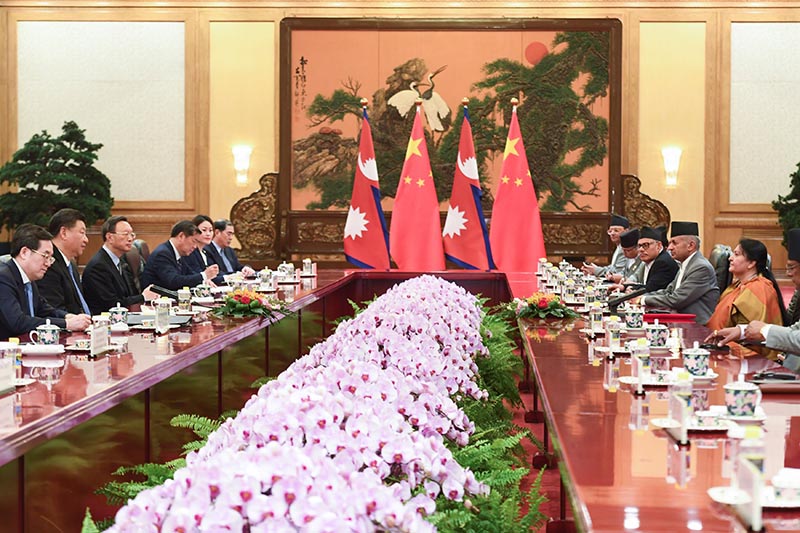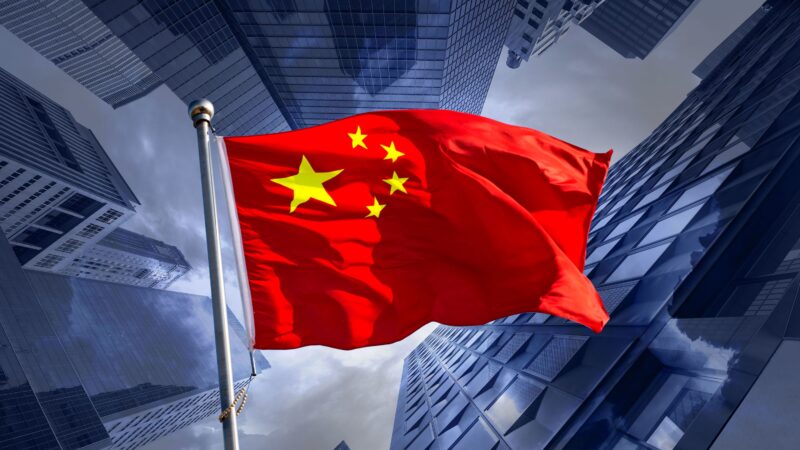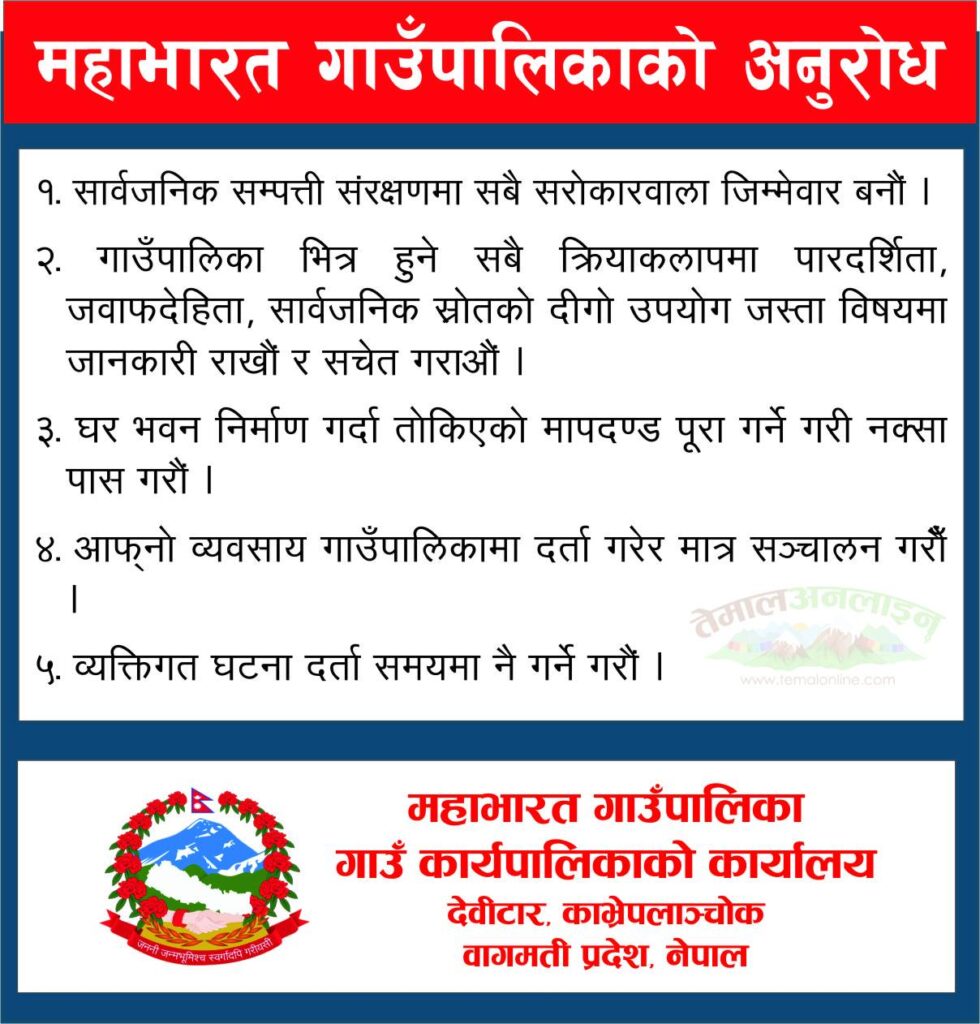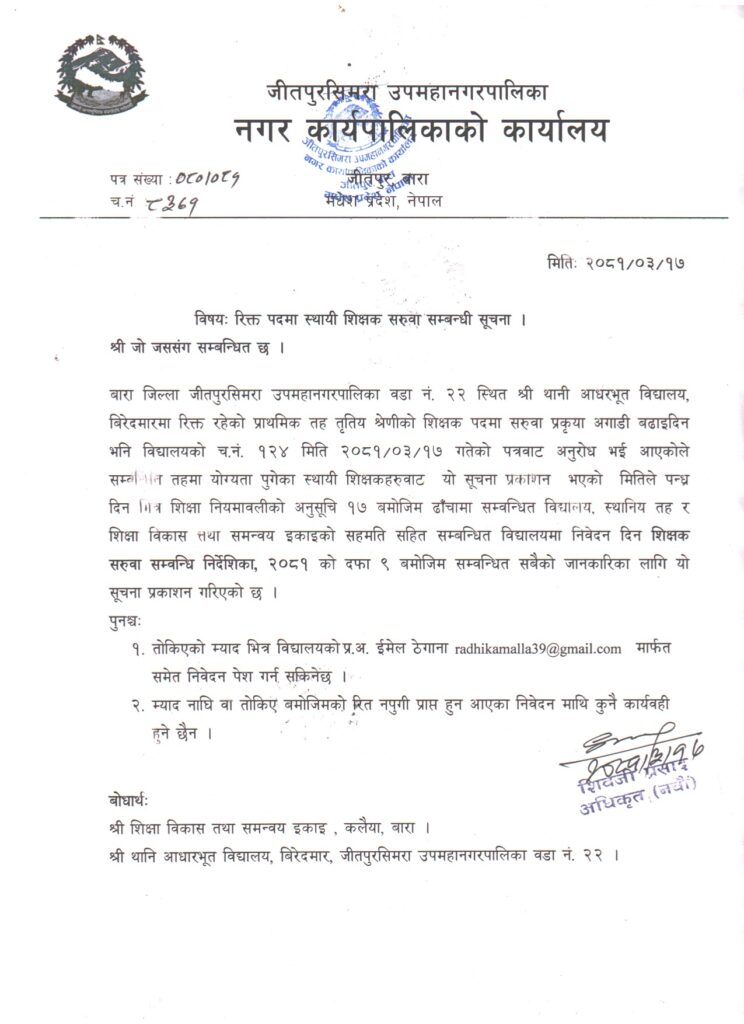यो सामग्री सुन्न प्ले थिच्नुहोस्
1x
प्लेब्याक गति- 0.5
- 0.6
- 0.7
- 0.8
- 0.9
- 1
- 1.1
- 1.2
- 1.3
- 1.5
- 2
President Xi’s Vision of Building a Community of Shared future for Mankind Helps Transform the World. president xi’s vision of building a community of shared future for mankind helps transform the world. मूलखबर संवाददाता काठमाडौं dr kalyan raj sharma. the world with full of social and economic disparities between those haves and have-nots, chinese president xi jinping’s vision of “building a community of shared future for mankind” is gaining a significant attention. this philosophy aimed at addressing those concerns and bridging the gaps in the developmental arena within societies and among nations promotes fairness and ensures that fundamental needs are met for all individuals, regardless of their geographic or socio-economic status. at the core of this vision is the idea of fairness and inclusivity. by prioritizing the well-being of individuals, communities, and nations, xi’s philosophy seeks to foster mutual respect and cooperation on a global scale. unfortunately, millions still live without these essentials. in regions like sub-saharan africa and parts of asia, access to clean water and healthcare remains a luxury rather than a right and for mankind to progress collectively, these fundamental disparities must be addressed urgently. at this point, the concerns of livelihood of the peoples from ldcs and the people severely affected from climate change impacts should be taken into consideration in the recent interpretations of this vision of president xi. with much focus on equality and sustainable development, xi proposes a comprehensive framework designed to foster global harmony — a much needed thing in the current time of unrest taking place in different parts of the world. the reality of our world today is that there are significant disparities in development, both within individual societies and between developed and developing countries. these gaps must be narrowed to have a more equitable world. the vision of building a community of shared future for mankind is rooted in the belief that every individual, regardless of their background, deserves a basic standard of living. this principle acknowledges that disparities in wealth and opportunity not only exist within countries but also across nations. in order to create a more just and harmonious world, it is important to address these inequalities and ensure that everyone has access to fundamental necessities. through fairness, sustainability, and cooperation, xi’s vision provides a plan for creating a more equitable and harmonious world. in an era marked by increasing globalization and interdependence, the idea of a shared future resonates as a powerful call to action for individuals, communities, and nations alike. this approach not only highlights the importance of mutual respect and cooperation among nations but also emphasizes the need for inclusive growth. this also advocates a shared progress and equitable distribution of resources and seeks to create a more balanced and interconnected world. one of the key pillars of xi’s approach is sustainable development. this entails not only meeting the immediate needs of people but also ensuring that resources are managed in a way that preserves the environment for future generations. promoting sustainable practices, such as renewable energy and conservation efforts, we should aim to create a more resilient and equitable world. practical measures must be taken to ensure that economic growth does not come at the expense of environmental degradation. this includes investing in renewable energy, promoting energy efficiency, and encouraging sustainable agricultural practices. china’s commitment to green development, as seen in its ambitious goals for carbon neutrality and substantial investments in renewable energy projects, serves as a model for other nations. moreover, there should be emphasis on the importance of cooperation among nations. in an interconnected world, challenges such as climate change, pandemic, and economic instability require collective action. by working together, countries can pool their resources and expertise to address shared concerns and build a more prosperous future for all. in practice, this philosophy has already influenced china’s domestic and foreign policies. domestically, this initiative aimed at poverty alleviation, rural development, and healthcare reforms reflect a commitment to improving the lives of all citizens, especially those in underserved communities. internationally, china has become increasingly involved in initiatives such as the belt and road initiative, which seeks to promote infrastructure development and economic cooperation across asia, africa, and europe. xi jinping’s vision also recognizes the importance of empowering local communities as engines of economic growth and cultural preservation. through decentralization, production and nurturing of local businesses, societies can cultivate strong economies that are less susceptible to external disruptions. this strategy not only fosters economic independence but also serves as a means of safeguarding cultural heritage. in many regions, local communities possess unique cultural practices and traditional knowledge that are integral to their identity. for example, the tharu community in nepal boasts a rich cultural heritage encompassing art, music, and traditional medicine. by leveraging these assets and integrating them into local economic ventures, such as eco-tourism and artisanal crafts, the tharu community can achieve economic self-sufficiency while simultaneously preserving their cultural heritage. this localized approach to development not only strengthens economic resilience but also raises a sense of pride and ownership within communities. by empowering individuals to take control of their own economic destinies, xi’s vision encourages grassroots innovation and entrepreneurship. moreover, by valuing and preserving cultural traditions, societies can maintain a sense of continuity and identity in an increasingly globalized world. the model demonstrated by the tharu community in nepal serves as a convincing plan for inclusive and culturally sensitive development. by prioritizing the needs and aspirations of local populations, nations can ensure that growth is sustainable, equitable, and rooted in the richness of diverse cultural heritage. as such, xi jinping’s emphasis on local empowerment represents a crucial aspect of his vision for building a community of shared future for mankind. local business leaders, in particular, have the opportunity to drive change by prioritizing local production and consumption. extending supports to the small-scale enterprises and cooperatives, they can stimulate economic activity and create opportunities for marginalized groups. additionally, efforts to localize production and incorporate traditional cultural practices can enhance the resilience and uniqueness of local economies. for instance, in nepal, local entrepreneurs can play a vital role in promoting tharu culture by integrating it into tourism initiatives and artisanal products. the belt and road initiative shows the idea of shared development through enhanced connectivity. the bri seeks to bridge infrastructure gaps and promote connectivity between regions that are currently underserved by transportation networks. through investment in the construction of highways, railways, ports, and energy pipelines, the initiative aims to facilitate the flow of goods, services, and capital across borders. this enhanced connectivity is expected to spur economic growth by reducing transportation costs, improving market access, and attracting foreign investment to participating countries. the increased trade flows not only benefit participating countries but also contribute to the expansion of the global economy. when the bri takes place, trade volumes are expected to rise as countries gain easier access to new markets and diversified sources of supply. this can lead to a more efficient allocation of resources, specialization in industries where countries have a comparative advantage, and overall welfare gains for participating economies. moreover, by promoting trade liberalization and regional economic integration, the bri can help mitigate the negative effects of protectionism and promote a more open and inclusive global trading system. beyond its economic implications, the bri also aims to foster cultural exchange and people-to-people connectivity among participating countries. through initiatives such as educational exchanges, cultural festivals, and tourism promotion, the bri seeks to deepen mutual understanding, strengthen friendships, and promote harmony among nations with diverse cultures and traditions.when the bri takes place, cultural exchange flourishes as people from different countries come into contact with one another, share experiences, and learn from each other’s perspectives. this cultural dialogue not only enriches individual lives but also builds bridges of trust and cooperation between nations, laying the groundwork for lasting peace and stability in the region. lastly, xi jinping’s thought on building a community of shared future for mankind presents an overall approach to addressing global challenges. by focusing on reducing developmental disparities, promoting sustainable practices, empowering local communities, and enhancing global connectivity through initiatives like the bri, we can move towards a more equitable and prosperous world. this vision calls for collective action and cooperation, reminding us that in an interconnected world, the well-being of one is essentially linked to the well-being of all. sharma is an economist.
President Xi’s Vision of Building a Community of Shared future for Mankind Helps Transform the World
मूलखबर संवाददाता
काठमाडौं
Dr Kalyan Raj Sharma
The world with full of social and economic disparities between those haves and have-nots, Chinese President Xi Jinping’s vision of “Building a Community of Shared Future for Mankind” is gaining a significant attention.
This philosophy aimed at addressing those concerns and bridging the gaps in the developmental arena within societies and among nations promotes fairness and ensures that fundamental needs are met for all individuals, regardless of their geographic or socio-economic status. At the core of this vision is the idea of fairness and inclusivity. By prioritizing the well-being of individuals, communities, and nations, Xi’s philosophy seeks to foster mutual respect and cooperation on a global scale. Unfortunately, millions still live without these essentials. In regions like Sub-Saharan Africa and parts of Asia, access to clean water and healthcare remains a luxury rather than a right and for mankind to progress collectively, these fundamental disparities must be addressed urgently. At this point, the concerns of livelihood of the peoples from LDCs and the people severely affected from climate change impacts should be taken into consideration in the recent interpretations of this vision of President Xi.
With much focus on equality and sustainable development, Xi proposes a comprehensive framework designed to foster global harmony — a much needed thing in the current time of unrest taking place in different parts of the world. The reality of our world today is that there are significant disparities in development, both within individual societies and between developed and developing countries. These gaps must be narrowed to have a more equitable world. The vision of building a community of shared future for mankind is rooted in the belief that every individual, regardless of their background, deserves a basic standard of living. This principle acknowledges that disparities in wealth and opportunity not only exist within countries but also across nations. In order to create a more just and harmonious world, it is important to address these inequalities and ensure that everyone has access to fundamental necessities.
Through fairness, sustainability, and cooperation, Xi’s vision provides a plan for creating a more equitable and harmonious world. In an era marked by increasing globalization and interdependence, the idea of a shared future resonates as a powerful call to action for individuals, communities, and nations alike. This approach not only highlights the importance of mutual respect and cooperation among nations but also emphasizes the need for inclusive growth. This also advocates a shared progress and equitable distribution of resources and seeks to create a more balanced and interconnected world.
One of the key pillars of Xi’s approach is sustainable development. This entails not only meeting the immediate needs of people but also ensuring that resources are managed in a way that preserves the environment for future generations. Promoting sustainable practices, such as renewable energy and conservation efforts, we should aim to create a more resilient and equitable world. Practical measures must be taken to ensure that economic growth does not come at the expense of environmental degradation. This includes investing in renewable energy, promoting energy efficiency, and encouraging sustainable agricultural practices. China’s commitment to green development, as seen in its ambitious goals for carbon neutrality and substantial investments in renewable energy projects, serves as a model for other nations. Moreover, there should be emphasis on the importance of cooperation among nations.
In an interconnected world, challenges such as climate change, pandemic, and economic instability require collective action. By working together, countries can pool their resources and expertise to address shared concerns and build a more prosperous future for all.
In practice, this philosophy has already influenced China’s domestic and foreign policies. Domestically, this initiative aimed at poverty alleviation, rural development, and healthcare reforms reflect a commitment to improving the lives of all citizens, especially those in underserved communities. Internationally, China has become increasingly involved in initiatives such as the Belt and Road Initiative, which seeks to promote infrastructure development and economic cooperation across Asia, Africa, and Europe.
Xi Jinping’s vision also recognizes the importance of empowering local communities as engines of economic growth and cultural preservation. Through decentralization, production and nurturing of local businesses, societies can cultivate strong economies that are less susceptible to external disruptions. This strategy not only fosters economic independence but also serves as a means of safeguarding cultural heritage.
In many regions, local communities possess unique cultural practices and traditional knowledge that are integral to their identity. For example, the Tharu community in Nepal boasts a rich cultural heritage encompassing art, music, and traditional medicine. By leveraging these assets and integrating them into local economic ventures, such as eco-tourism and artisanal crafts, the Tharu community can achieve economic self-sufficiency while simultaneously preserving their cultural heritage. This localized approach to development not only strengthens economic resilience but also raises a sense of pride and ownership within communities. By empowering individuals to take control of their own economic destinies, Xi’s vision encourages grassroots innovation and entrepreneurship. Moreover, by valuing and preserving cultural traditions, societies can maintain a sense of continuity and identity in an increasingly globalized world. The model demonstrated by the Tharu community in Nepal serves as a convincing plan for inclusive and culturally sensitive development. By prioritizing the needs and aspirations of local populations, nations can ensure that growth is sustainable, equitable, and rooted in the richness of diverse cultural heritage. As such, Xi Jinping’s emphasis on local empowerment represents a crucial aspect of his vision for building a community of shared future for mankind.
Local business leaders, in particular, have the opportunity to drive change by prioritizing local production and consumption. Extending supports to the small-scale enterprises and cooperatives, they can stimulate economic activity and create opportunities for marginalized groups. Additionally, efforts to localize production and incorporate traditional cultural practices can enhance the resilience and uniqueness of local economies. For instance, in Nepal, local entrepreneurs can play a vital role in promoting Tharu culture by integrating it into tourism initiatives and artisanal products.
The Belt and Road Initiative shows the idea of shared development through enhanced connectivity. The BRI seeks to bridge infrastructure gaps and promote connectivity between regions that are currently underserved by transportation networks. Through investment in the construction of highways, railways, ports, and energy pipelines, the initiative aims to facilitate the flow of goods, services, and capital across borders. This enhanced connectivity is expected to spur economic growth by reducing transportation costs, improving market access, and attracting foreign investment to participating countries. The increased trade flows not only benefit participating countries but also contribute to the expansion of the global economy.
When the BRI takes place, trade volumes are expected to rise as countries gain easier access to new markets and diversified sources of supply. This can lead to a more efficient allocation of resources, specialization in industries where countries have a comparative advantage, and overall welfare gains for participating economies. Moreover, by promoting trade liberalization and regional economic integration, the BRI can help mitigate the negative effects of protectionism and promote a more open and inclusive global trading system.
Beyond its economic implications, the BRI also aims to foster cultural exchange and people-to-people connectivity among participating countries. Through initiatives such as educational exchanges, cultural festivals, and tourism promotion, the BRI seeks to deepen mutual understanding, strengthen friendships, and promote harmony among nations with diverse cultures and traditions.When the BRI takes place, cultural exchange flourishes as people from different countries come into contact with one another, share experiences, and learn from each other’s perspectives. This cultural dialogue not only enriches individual lives but also builds bridges of trust and cooperation between nations, laying the groundwork for lasting peace and stability in the region.
Lastly, Xi Jinping’s thought on building a community of shared future for mankind presents an overall approach to addressing global challenges. By focusing on reducing developmental disparities, promoting sustainable practices, empowering local communities, and enhancing global connectivity through initiatives like the BRI, we can move towards a more equitable and prosperous world. This vision calls for collective action and cooperation, reminding us that in an interconnected world, the well-being of one is essentially linked to the well-being of all.
Sharma is an economist











